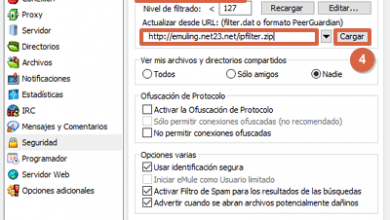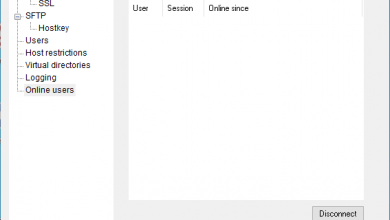SolarWinds SFTP: Installation, configuration and use of this SFTP server

The SFTP protocol allows us to transfer files quickly and safely through the local network or the Internet, since SFTP is based on the SSH protocol itself for the establishment of the connection and the connection itself. Today in RedesZone we are going to teach you in detail about everything that the SFTP and SCP SolarWinds server is capable of, available for Microsoft Windows operating systems.
SolarWinds in its free version offers us a complete server compatible with the SFTP and SCP protocols to be able to make downloads and uploads to our transfer server that we want safely. We must remember that, with this protocol, both user authentication and file transfers are fully encrypted and authenticated. Its free version is limited to file transfers of maximum 4 GB in size, its main features are:
- You can make multiple transfers at the same time from different devices.
- You can block or authorize access to the server by using an IP range, or a specific IP.
- The server starts as one more service in Windows.
How to install SolarWinds
In order to install SolarWinds, we must download its installation software by going to the official SolarWinds download website and filling in the form that appears. Once downloaded, we must unzip the file, and inside we will have the installation executable that we must open and follow its installation wizard.
SolarWinds Commissioning and Configuration
The first time we start the SFTP SolarWinds server, we will get a warning from the Windows firewall in case we have it active, asking us to authorize access to the ” ScpServerTray ” application , which we must respond to allow access.
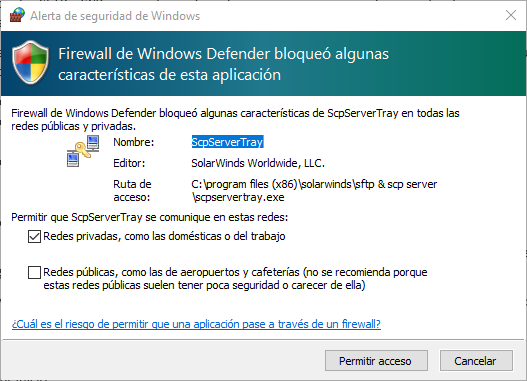
Once access to the application is allowed, the following screen will appear that you can see below, where we are going to review below what each option is for. Keep in mind that the server is not yet active, and that you have to follow a few steps to start it that we will detail below.
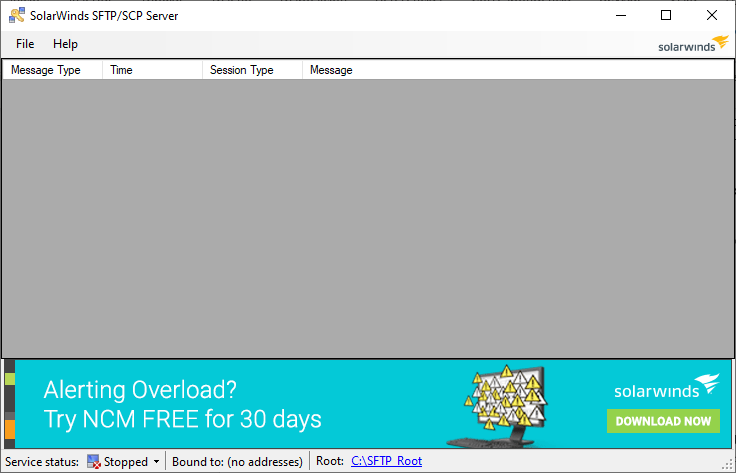
At the top of the window, we find two menus, « File and Help «. Within the “File” menu, we have three more options, “configure”, “minimize to tray” and “exit”.
Configure : Within this option we can configure all the parameters of the SFTP / SCP server. It is divided into four tabs.
- General : Here we can configure the directory where the “root” folder is located, and also configure which protocols have permissions to transfer files and which version of SSH can be used, giving us a choice between SSH1, SSH2 or both. Finally, we can choose what operations are allowed on the server, such as creating, deleting, renaming files or folders.
- TCP / IP Settings : In this tab we can choose which port the SFTP and SCP connections use, as well as being able to block or allow access by IP.
- Users : Here we can create the different users who will have access to the server, and also activate the option to allow anonymous users.
- Startup & System Tray : Here we have several options, the first is that the application starts automatically when logging in to Windows, and the second and last option is how we want the server to start, giving us the option that it is minimized in the area clock or the application is closed.
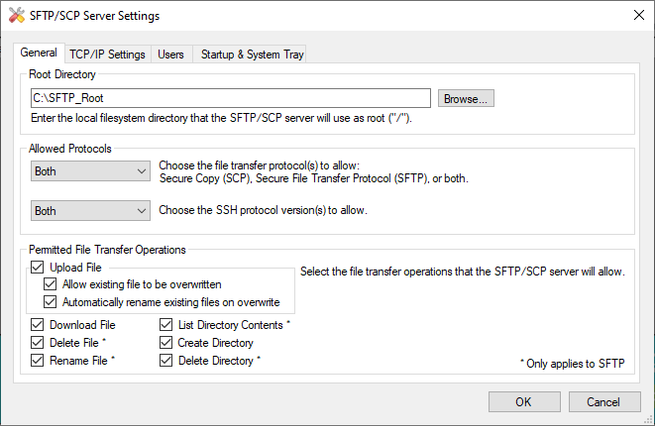
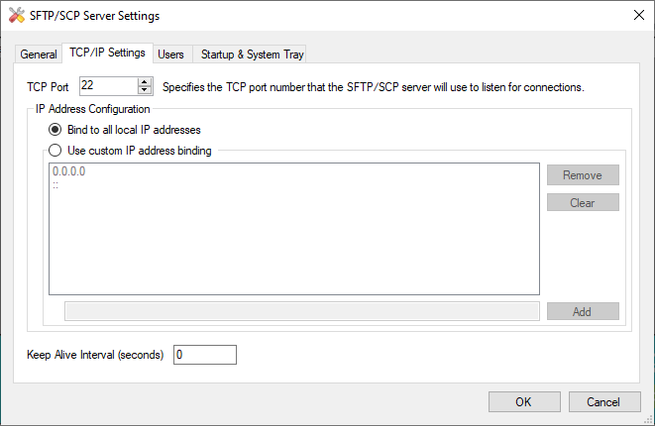

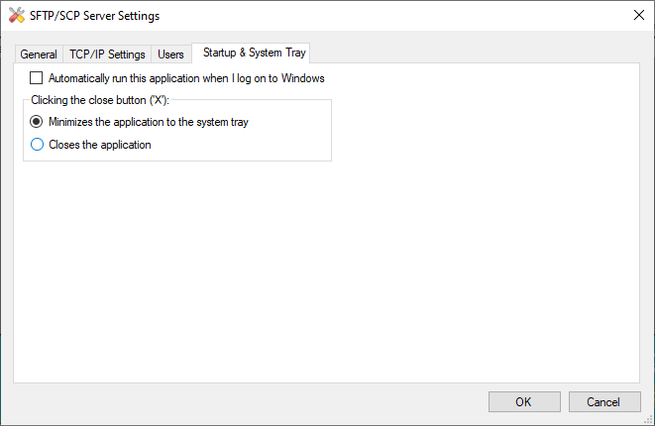
- Minimize to tray : This option allows us to minimize the application to the Windows clock zone.
- Exit : This option allows us to close the server.
In the Help menu, we have access to the help of SolarWinds, and, finally, we have access to the option “about” where we can see the version of the server that we are using.

Just below the previous menus that we have seen, we find a gray window. When the server is operational, it is in this area where the information of the active users appears.
Finally, at the bottom, we have several important options, the first is ” Service status “, where as you can see in the image, it comes out in the ” Stopped ” state , if we click there, and click ” Start “, we will start the operation from the server. To stop it, you have to carry out the same action, but clicking on ” Stop “.
To the right of ” Service status ” we can quickly see if we have any IP access blocking configured and also where the “root” directory is located.


SolarWinds is a very simple SFTP / SCP server to handle and configure as you have seen. It depends how we see it, its virtue or defect is precisely that it does not have as many configuration options available as other programs that we have seen previously in RedesZone. If you are looking for a simple to use server and considering the limitation of its free version to file transfers of less than 4GB in size, SolarWinds may be a very interesting option.

